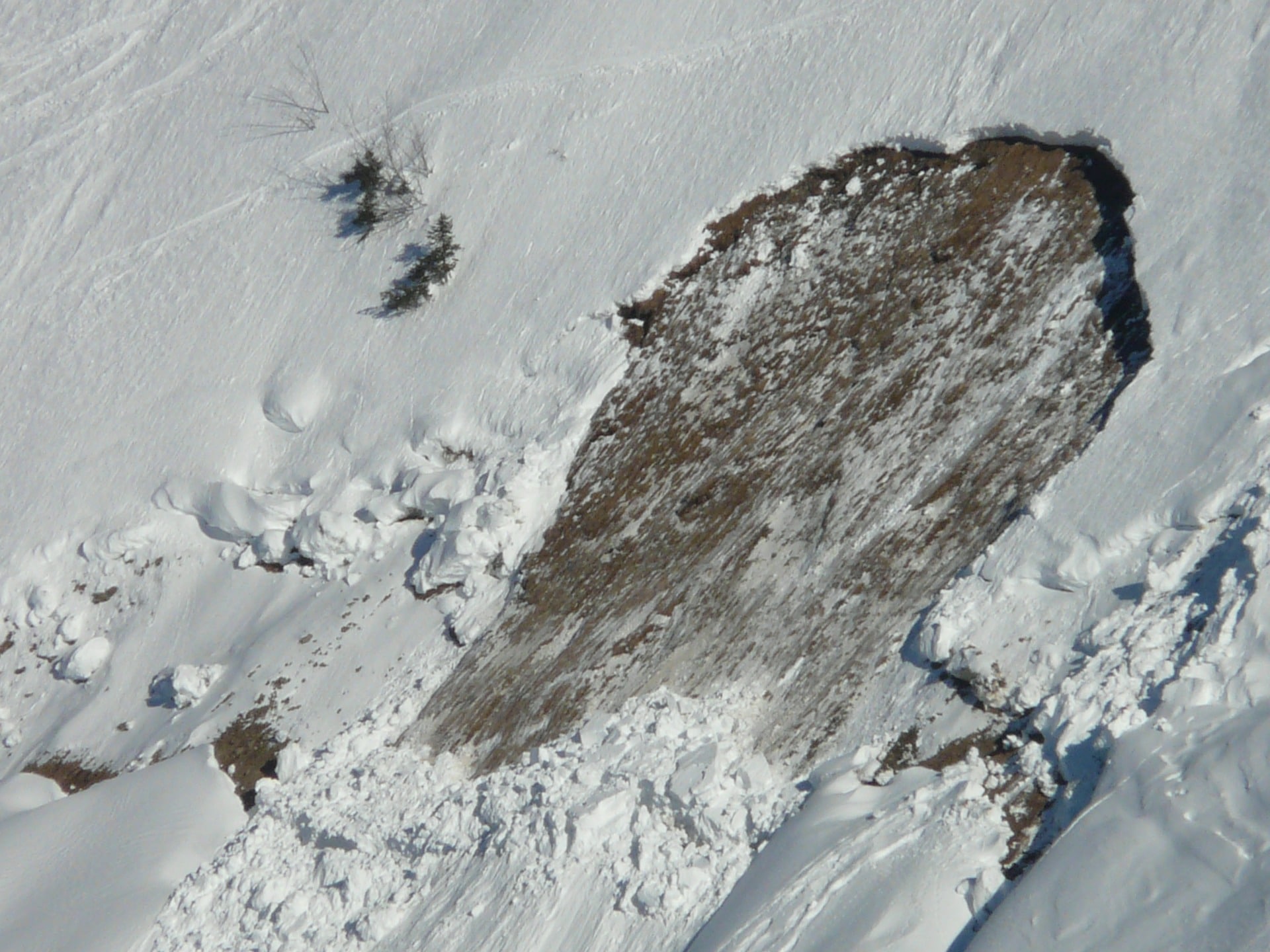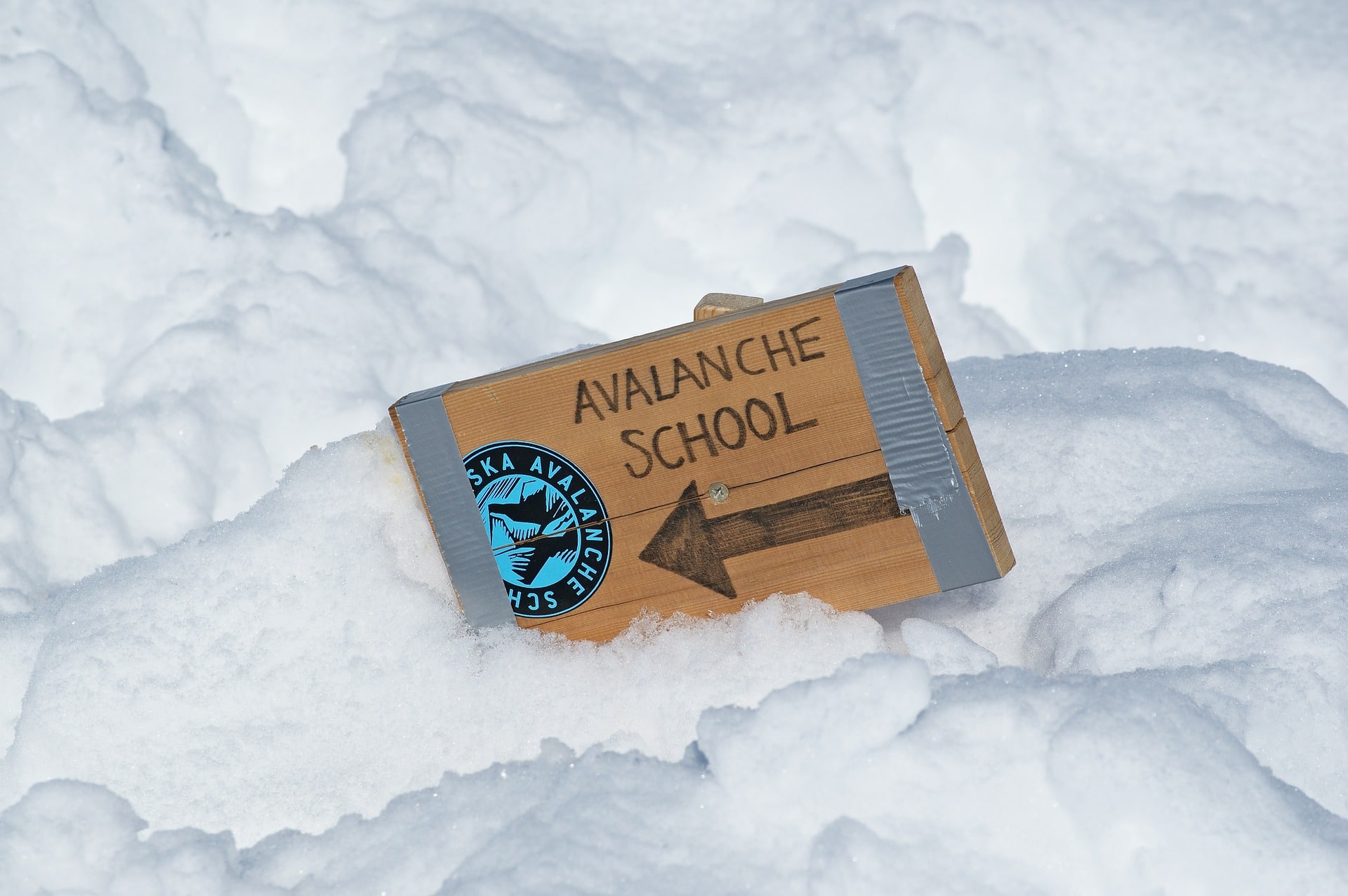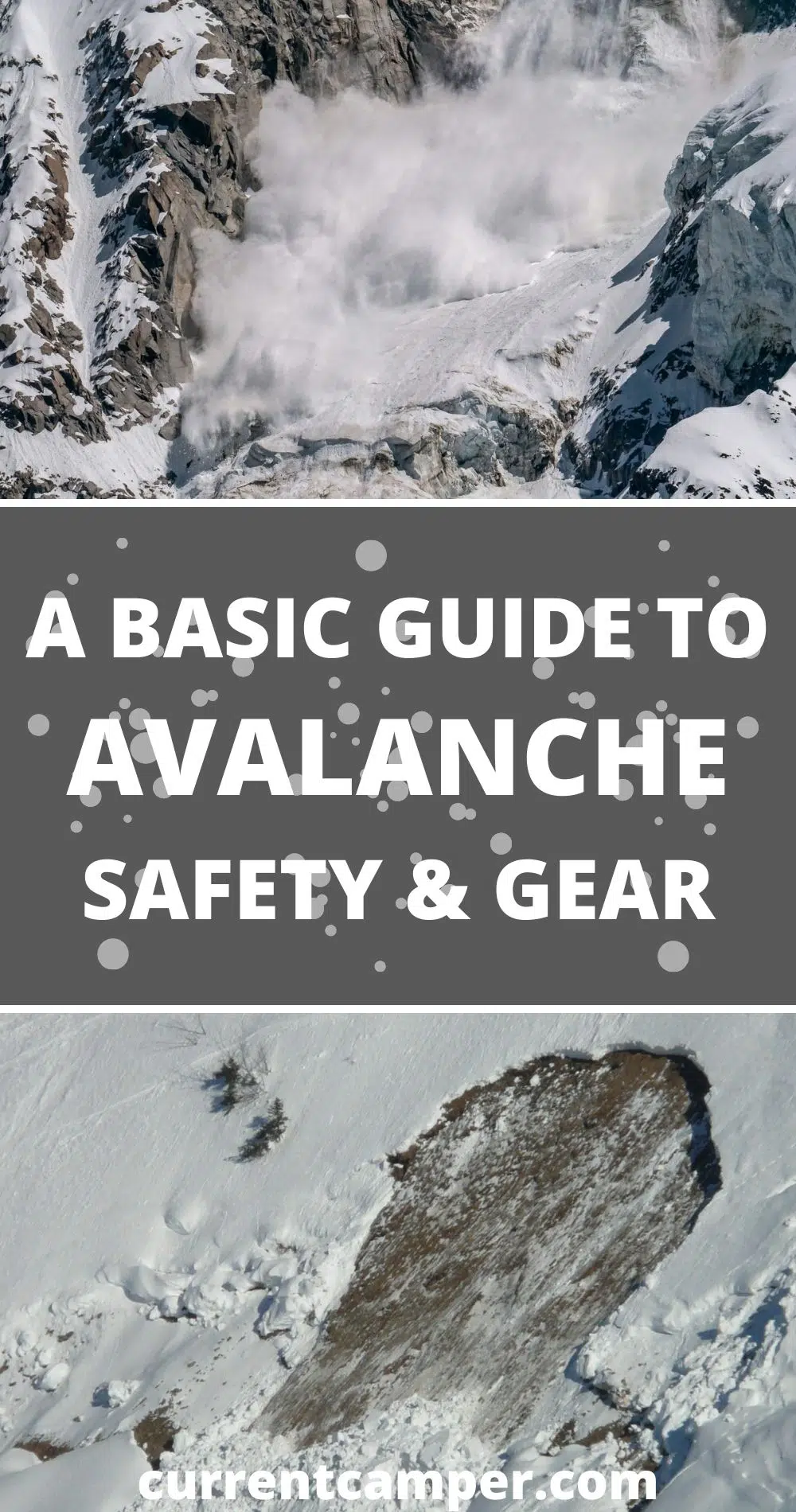
Exploring mountainous backcountry is a truly breathtaking experience. The miles of untouched snow, the solitude of being out in nature, and the allure of skiing or snowboarding through deep powder all make the backcountry a worthwhile place to explore.
However, there’s always an element of risk in traveling through the backcountry. Oftentimes, you’ll find yourself in avalanche terrain. If you plan to venture through avalanche terrain, it’s extremely important that you are fully prepared and educated on avalanche safety so you can have a safe and enjoyable experience.
Here, we’ll go over some of the basics of avalanche safety. This is meant to be an introduction or overview, not a formal safety education. Use this as a starting point, but make sure you are fully prepared and formally educated on avalanche safety before heading out into the backcountry.
What is an avalanche?
An avalanche is a large amount of snow that slides down a mountain (or any slope) at a very rapid pace. They can be triggered by natural activity like wind, precipitation, or a change in temperature, or by human activity like skiing or snowboarding. Avalanches are very serious and dangerous and can claim human lives (27 per year average in the U.S. alone). If you like to enjoy any activity in the snowy mountains, whether it’s backcountry skiing or just snowshoeing to a nice view, you can benefit from learning about avalanche safety.
Where and how do they occur?

Most avalanches occur in the backcountry, meaning beyond the boundaries of ski resorts. They most often happen above the treeline on slopes between 25 and 50 degrees. Snow tends not to pile up on slopes steeper than that. Avalanches occur when the strength of gravity (sometimes in addition to the force of a skier or other backcountry adventurer) exceeds the strength of the snow. Unstable snow in avalanche terrain and a natural or human trigger creates the perfect conditions for an avalanche to occur. The US is the fifth most dangerous country for avalanches, with Colorado, Utah, and Alaska seeing the most avalanche-related fatalities.
Avalanche Forecasts
When traveling in avalanche terrain, which is anywhere an avalanche can start, run, or stop, it’s important that you check the avalanche forecast via your local avalanche center before heading out. Like the weather, avalanche forecasts change daily so it’s important that you continue to check on them until your adventure begins. These forecasts give large-scale descriptions and are often not specific to particular slopes. The forecast will give you a rating of how dangerous it is that day, the likelihood of an avalanche occurring, the predicted size of an avalanche, and travel advice. They use a universal avalanche danger scale that has five levels:
- Low: most likely safe, but always keep an eye out.
- Moderate: heightened avalanche risk on certain terrain. Find out where and avoid those areas.
- Considerable: Dangerous conditions. Be very cautious, but you can still go out and have a safe and enjoyable day as long as you pay close attention.
- Dangerous: Very dangerous avalanche conditions. Don’t go near avalanche terrain.
- High: Avoid avalanche terrain, stay home.
You can also follow your local avalanche center on social media and/or sign up to be alerted of avalanche warnings.
READ MORE: A Beginner’s Guide to Backcountry Skiing
Avalanche Red Flags

Even if the avalanche forecast looks good, you should keep an eye out for the five avalanche red flags.
- Recent avalanches – which indicate unstable snow.
- Signs of unstable snow – like cracking, collapsing, or drum-like sounds.
- Heavy snowfall or rain – which can cause unstable snow for a few days.
- Wind-blown snow
- Rapid melting
If you notice any of these red flags, it’s a good idea to turn back and save your adventure for a safer day. It’s never worth the risk.
Avalanche Safety Gear
First of all, being prepared doesn’t just mean having all the gear on this list. You should also know how to use it and be formally educated in avalanche safety/rescue. It’s equally important that you don’t travel in avalanche terrain alone, and that whoever you go with is also formally educated in avalanche safety, has all of the essential gear, and knows how to use it.
Beacon (or transceiver): Everyone in your group should carry a beacon. Turn this device on and put it on “send” mode so it is sending out a signal (sharing your location) before you begin your trek. If an avalanche occurs and someone in your group is buried, you can switch your beacon to “search” mode and it will guide you as close as it can to their location.
Probe: Everyone should also carry a probe, which is a long stick (that breaks down sort of like a tent pole) used to poke down into the snow in an effort to narrow down the exact location of the buried victim before digging.
Shovel: You should all also carry a shovel, that way everyone can help dig out the buried victim once their location has been determined.
Airbag Pack: If you’re wearing an airbag pack while caught in an avalanche, you can pull the handle and either a pressurized cartridge or an electric fan will inflate the airbag. This will help to keep you afloat and more visible to those who come to rescue you.
Avalanche Safety Classes

This post only touches on the very basic elements of avalanche safety. We highly recommend that you take an avalanche safety course for formal avalanche education before heading out into the backcountry. Check out classes at your local avalanche center, the American Avalanche Association, or other organizations. Educate yourself further by reading books, watching tutorials, and/or hiring a guide for your trip.
Stay safe and enjoy all the backcountry has to offer!
By Christa Huddleston
READ MORE: How to Start Planning an Epic Ski Vacation
Pin it for later!
